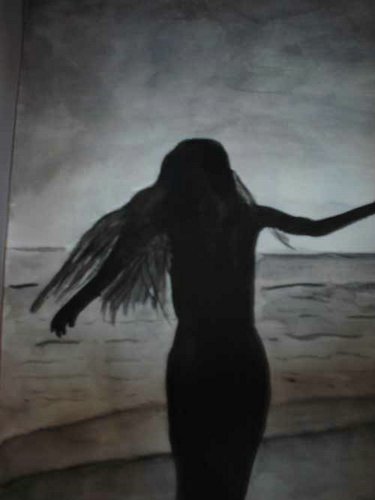The Pallikaranai Swamp along the old Mahabalipuram road has always served as the city’s stormwater drain and as a mini-ecosystem supporting over 106 kinds of migratory and wetland birds.However,over the years,its size has shrunk from 40 sq km to four square kilometres.The marsh has served as a landfill for solid waste and sewage and part of it has also been used by Chennai Metropolitan Development Authority(CMDA) for housing,and for building a Government hospital,colleges, and the Mass Rapid Transit System(MRTS) .
 (Photo taken from Frontline magazine)
(Photo taken from Frontline magazine)
According to Mr.Ramkumar,an advocate working with Exnora,the two main issues concerning residents and others like the Save the Pallikaranai Marsh Forum(SPMF)are the unscrupulous garbage dumping and the destruction of the water ecosystem.Mr.Ramkumar said that under the pretext of reclaiming the marsh,the National Institute of Ocean Technology had been allowed to construct its building right in the middle of the wetland.
Exnora has been propagating a system of waste management that would tackle both the volume and nature of garbage.It is suggesting the use of composting and recycling,both of which can reduce reduce the volume of garbage to only 10% of the original volume.Mr.Ramkumar explains that since roughly 50 percent of the city’s garbage is organic it can be composted and the inorganic waste can be recycled.
Even composting,he said,can be done at the family level or at the community level- “You can compost garbage in plastic buckets at home.Or, a few families can employ a person to do it.Only 25 percent will remain,which you can add as fertilizer to the topsoil”.He adds that it is essential to develop a market for various recyclable items.This could reduce the city’s solid waste output from 5500 tonnes to merely 250 tonnes.
The SPMF,on the other hand feels that the encroachment of the marsh will affect its biordiversity as it is the breeding place for wetland birds.Mr.Murugavel of the SPMF pointed out that birds are hunted down indiscriminately using ‘spray bullets’ that contain metal ions to stun them en masse.
The SPMF also voices the concerns of citizens living nearby.Many people have respiratory diseases due to garbage burning.Similarly, discharge of industrial effluents has caused an increase in the levels of lead,chromium and mercury in the water table.
Due to the efforts government organizations and fora like Care Earth,SPMF and Sustain the Government is finally “taking interest now” in declaring Pallikaranai a protected area,Mr Murugavel said.
However,the SPMF still plans to conduct a ‘Satyagraha’,involving fasting,on October 2nd.Their goals are to ensure that the marsh soon be declared a protected area under the Tamil Nadu Forest Act (1882) and Wildlife protection act (1972),to prevent dumping or burning of garbage,and to ban building construction in the marsh.
However,if the Government does not do so quickly,and if the remaining part of this natural flood barrier is destroyed,the whole of the adjacent area of Velachery could be flooded.This will not only mark the end of an ecosystem but will leave the city bereft of a storm drain and the residents of the area swamped by new problems.



